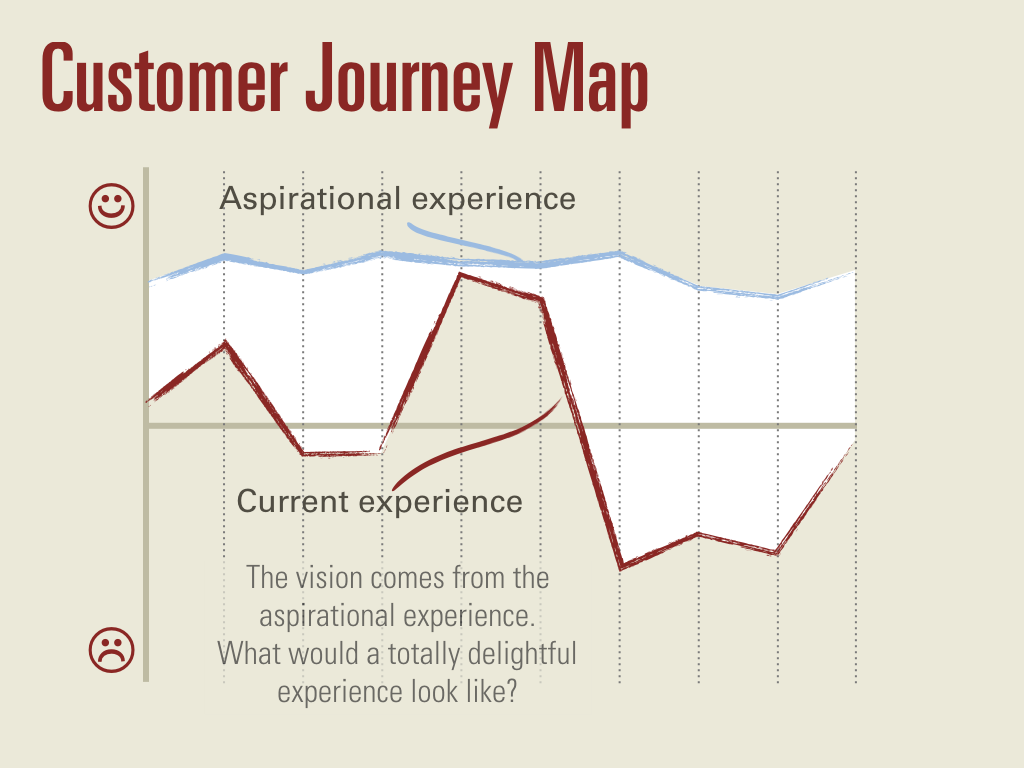Building an Experience Vision From a Journey Map
The task of coming up with a long-term vision of your design can be a daunting one. It’s a lot of responsibility to imagine what an ideal experience can be, then render a possible design to achieve that experience.
However, there’s a way to break this task into bite-sized bits. By doing that, a vision emerges from a series of smaller, um, shall we call them, visionettes.
Here’s how teams we’ve worked with have done it:
Step 1: The team observes participants as they use current solutions to a problem they have. Those solutions could include the product’s existing design. Those solutions could also include other tools and processes available to participants. As the team members observe, they note the order of steps the participant takes and whether the participant finds each step frustrating or delightful.
Step 2: The team creates a journey map that shows the experience of each study participant. One approach is to use a horizontal timeline with milestones that represent each step. The team measures frustration and delight on the map using a vertical timeline. The higher the point on the timeline, the less frustration and more delight the participant had at that point.
The resulting map shows the current experience for that participant. The team creates a different map for each study participant and looks for patterns that emerge.
Step 3: The team draws an archetypal journey map—one for a persona that represents the patterns they’ve observed across participants. (When they create more than one archetypal map, they now have multiple personas for their design. This isn’t necessary, but it can provide some interesting insights, especially if the activities vary widely.)

An abstract map of the current experience and the aspirational experience
Step 4: The team studies the archetypal journey map for frustrating dips in the experience. They discuss: What could we do to make each of these better? Can we change the design to be more delightful? Is there a way to eliminate the step altogether?
By reviewing the unique points of frustration across the archetypal journey map, the team gets a jumpstart on what their overall vision might be. It’s easy to take a complex series of interactions and imagine a cleaned-up version. When they do that two or three more times, they start to see a better experience that flows more smoothly.
By focusing on all the low bits in the design, the team has a good starting point for a future vision that is a more delightful experience.
UX Leadership and Influence program
(Formerly called the How to Win Stakeholders & Influence Decisions program.)

Our 16-Week program guides you step-by-step in selling your toughest stakeholders on the value
of UX
research and design.
Win over the hardest of the hard-to-convince stakeholders in your organization. Get teams to
adopt a
user-centered approach. Gain traction by doing your best UX work.
Join us to influence meaningful improvements in your organization’s products and services.
Learn more about our UX Leadership and Influence program today!

